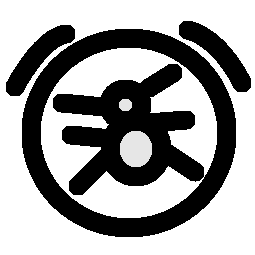Overview
What precisely is verse vs. Prose? The Shakespearean drama Much Ado about Nothing uses what verses? This post will be a massive help if you are a student learning Shakespeare and are seeking more similar questions. In spoken language, the distinction between a prose play and a verse play refers to two key aspects of creative writing. This material can help you understand the concepts and precise distinctions between Verse and Prose.
Let’s study the definitions of these literary creations in detail before discussing verse vs. Prose and the other natural form of literature.
Prose: A Definition
Prose derives from the Latin “prosa oratio,” which means uncomplicated. The prose is a generic term for creative writing. Both fictional and nonfictional writing can make use of it. Additionally, it is a literary masterpiece. Any high school student would be aware of the usefulness of “prose” in documents like letters, diaries, novels, short tales, encyclopaedias, textbooks, articles, casual conversations, dictionary definitions, and so on.
Which Forms of Prose Are There?
Learn the following four fundamental styles of Prose:
Fictional:
The most well-known fictional works include both novels and short tales. The fictional Prose has a narrative, a place, characters, and conversation.
Nonfictional:
Factual information or occurrences are included in the nonfictional text. A nonfictional Prose is any literary work based on an actual event.
Heroic:
This literary piece is available for reading. The tales of heroes and legends may be found in this type of Prose. Additionally, you may describe them as dramatic narrative prose stories. The “islander sagas” are among the best examples of heroic literature.
Lyric poetry
Prose poetry is a distinctive kind of poetry written in a rhythmic or rhymed pattern. Additionally, it makes extensive use of metaphor. The distinctions is the term for writing that combines both Prose and poetry. It emphasises the emotional side primarily.
The meaning of the verse
The most traditional and well-liked method of communicating to promote culture is through poetry.
It also has an apparent rhyme and is one-line poetry. It is written in metres. A stanza is a collective term for a series of poems. The romantic phrase is more frequently used in verse. It frequently employs metric rhythm.
This is the place where you may find business assignment help!
What varieties of poetry are there?
➮ Free Poetry
Poetry is free verse with no rhyme system, and the metrical patterns change. Such poetry makes creative use of sound, imagery, and several literary elements.
➮ Free Verse
What is the best explanation of Prose vs. blank verse? – The blank Iambic pentameter, which is rhythmical, is present in verse. It emphasizes intense occasions. One may grasp the blank verse vs. distinctions well with the preceding sentence. Students also need to understand the significance of blank verses in the classroom.
Shakespeare uses both poetry and Prose; why?
Shakespeare’s works contain several instances of both Prose and verse, which you will find quite enjoyable. More crucially, Shakespeare used both Prose and verse in his theatre. Shakespeare’s work demonstrates how they may use rhymed verse sparingly.
Similar symmetry may be observed in the Prose and poetic translations of Beowulf. If you need difficult work completed fast, check out LiveWebTutors Business Assignment Help.
Verse’s differences from Prose
Let’s discuss some significant distinctions between Prose and verse:
- The Prose is a piece of literature that follows a straightforward grammatical framework. There are several phrases and paragraphs combined in it. A poem, however, has an entirely different structure. It establishes a rhythm and follows a sequence.
- A verse’s words are arranged in a metrical order, whereas Prose comprises non-metrical writing.
- A type of composition written in words with paragraphs is called Prose. On the other hand, The Verse is poetic creation.
- Readers will appreciate the use of both rhyme and rhythm in distinctions. The verse, however, lacks both rhyme and flow.
- Grammarly sound sentences produced in grammatical language are given more significant consideration in Prose. However, a poem is more artistic and uses a rhythmic style.
- When the words in Prose are put together, they form a sentence, which then develops into a paragraph. A stanza is created from the arranged lines that make up a poem.
- A writer or an author writes the prose. Poets compose poetry.
More on Prose versus poetry
➮ Rhythm and rhyme
Poetry uses two different types of sound: rhyme and rhythm. You can’t create a rhythm if there isn’t a rhyme. A rhymed word is explicitly placed after a line or rhymed stanza.
The Prose does not pay much regard to rhyme or rhythm, although rhythm tends to emphasise groupings of syllables across the entire line. These two, though, are the most valuable parts of the verse.
➮ Structure
The sentences have a distinct category when students put thoughts in them. They then transition into paragraphs. It takes on the form of storytelling, most notably Prose.
Understanding word count and sentence length are crucial since Prose must fit into small places and cannot be extended.
The way poetry is structured is unique. The poem groups the concepts into additional lines to create stanzas. Together, numerous stanzas form poetry.
➮ Language
The use of language is crucial to both Prose and verse. Preferably, the distinctions is written in a language used in everyday conversation. Prose, therefore, sounds more authentic.
However, each line of verse contains metaphorical speech and rhythmic language.
➮ Pentameter in Iambic
Before we define it, we should be aware that an iamb is both a metric unit and a rhythmic structure. It requires a stressed (emphasis) syllable and an unstressed syllable combined in five groupings. Poetry is its principal use.
➮ Void verse
Iambic pentameter that is not rhymed is known as a blank verse. It is also a literary technique used in both Prose and poetry. Every line has ten syllables, and the metre is constant. Unstressed syllables coexist with stressed syllables in a blank verse. Although there are five emphasised syllables, they do not rhyme.
Conclusion
Both Prose and verse have importance in allowing the characters to go near the reader’s heart and thoughts. The main distinction between the two is that one develops into a lengthy essay or story while the other has a steady beat. Therefore, the characters might communicate with the audience using Prose and poetry to provide a more thorough idea.
Author: Elina Jones

